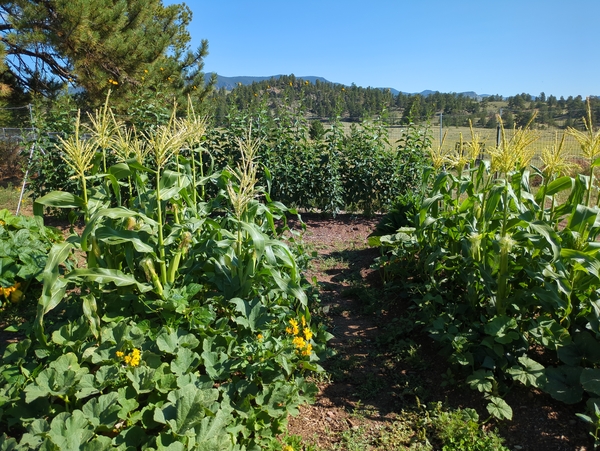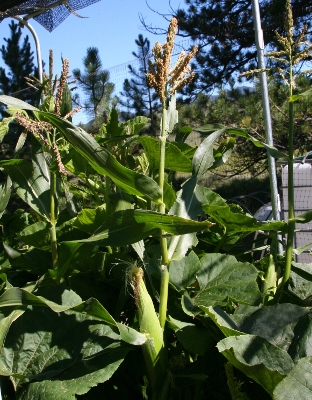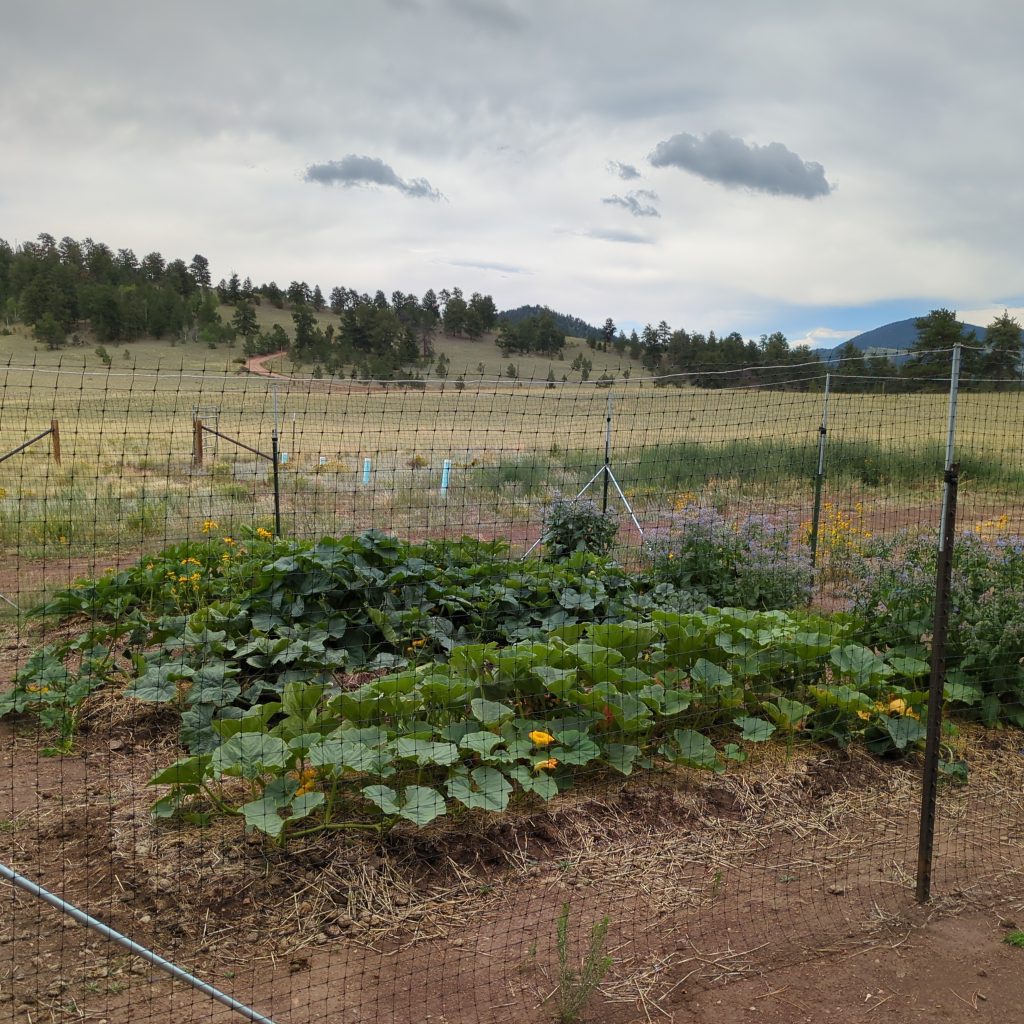
Now that we have our freeze dryer to preserve more veggies, we’ve decided we can grow more food. We’ve made some changes to our garden plans to accommodate more of the things that can be freeze-dried.
NEW in 2024, we started a separate area for pumpkins & winter squash. Typically we’ve grown our pumpkins & winter squash in our raised beds, but since these plants take up so much space, we decided to move them out to pasture… another area to allow for other veggies better suited to raised beds.
With our new Kioti tractor, Tim dug down & leveled out an area in full sunshine for the squash. It’s about 20’ x 20’, and fully fenced with deer fencing, 6’ tall. This area is close to our garden water source and easily accessible. It’s shown in the photo below. (This photo was taken in late October, showing nothing in the main garden and lots of dead vegetation. Note the shaded part of the Main Garden—this is not shaded during the summer months.)
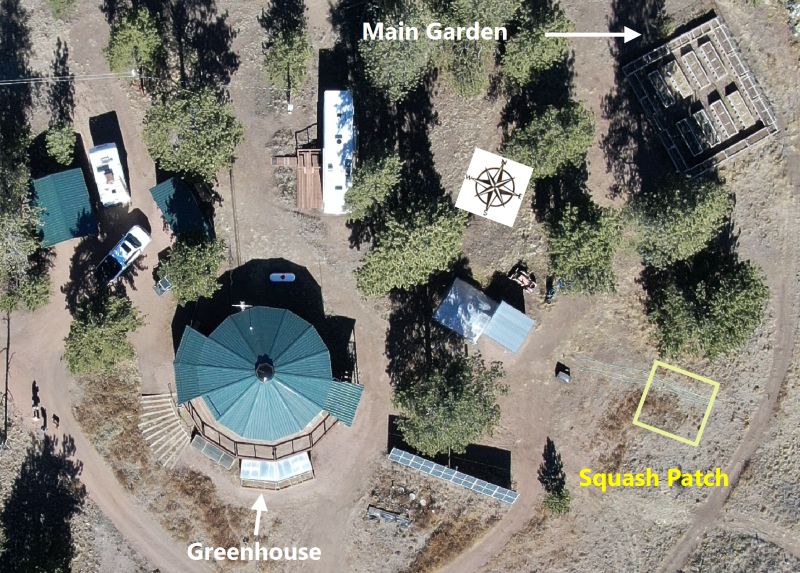
After the tractor work was done in late April or early May, beds were created by adding layers of manure, leaves, duck shavings and soil. The beds were allowed to rest 4 weeks prior to planting.
The squash & pumpkins were started in soil blocks under lights in the greenhouse, then transplanted to the large, maxi-sized soil blocks and allowed to grow further in the greenhouse, about 4 weeks total. They were transplanted outdoors June 7th. Fortunately this year there was no frost after that date, but we were prepared with frost cloth just in case.
We grew three Sugar Pie pumpkin plants, two Lakota squash, one Waltham Butternut, and one each of Celebration, Honey Boat, Zeppelin Delicata & Sweet Dumpling. Additionally, we added some Borage & Comfrey as companions.

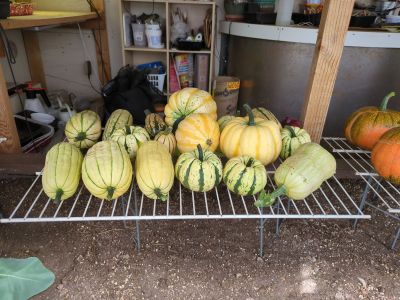
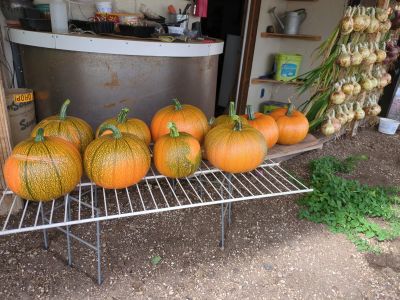
Our harvest was wonderful! As always, it gets a bit dicey in the fall with worries about when frost may hit us, and wondering whether we should cover things up. The frost hit around September 17th, to kill off the leaves. The squash/pumpkins were harvested at that time, and most were delicious. A few, still greenish, weren’t quite mature before the frost and didn’t keep as long in storage, as expected.
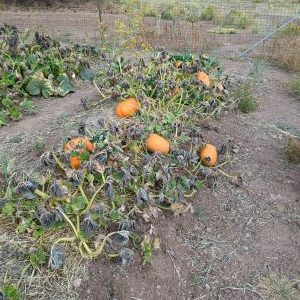
Next year, I’ll remove any squash blossoms that appear after August 1st, as I doubt they will be able to mature before any frost, and they won’t be worth keeping. That’s one thing about our short summer season: we just have to do the best we can without pushing the limits.
For 2025, I’ll attempt some “three sisters”, and grow some corn & beans along with the squash. I did attempt to grow some corn the first year we were here, and it did not do well. I tried a shorter variety of corn in our raised beds, which was also supposed to have been a short-season corn. Perhaps it was just not a good variety or perhaps not a good year. I have heard of people growing corn around here, so I’ll give it one more try.




